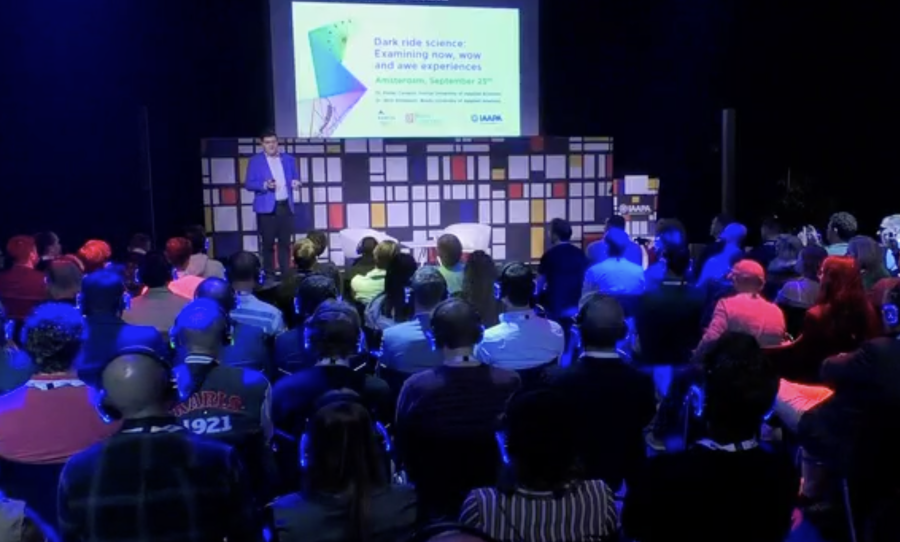Wednesday's IAAPA Expo Europe EDUSession, titled "Dark Rides: Now, Wow and Awe Experiences," was presented by Dr. Wim Strijbosch from Breda University of Applied Sciences and Pieter Cornelis from Fontys Academy for the Creative Economy.
“Dark rides are often the most cherished memories that we have of our theme park visits. Some scholars even say that dark rides are the archetypal theme park attraction,” says Strijbosch. “Dark rides to a theme park are what the roller coaster is to an amusement park.” He explains that dark rides are somewhat of a necessary evil, as the lower volume of visitors may not always warrant the investment. It is also easier to market a roller coaster than a dark ride.
Study 1: Dark Ride Design and Supply
Distinguishing dark rides from indoor roller coasters, and emphasizing the value of content-based experiences, Strijbosch and Cornelis define dark rides as attractions housed in enclosed spaces where visitors traverse animated scenes in guided vehicles. Utilizing a comprehensive database of 238 dark rides in the Europe, Middle East, and Africa (EMEA) region, their study identifies three critical dimensions: storytelling, theming, and interactivity. This analysis led to the creation of the "Dark Ride Cube," a conceptual model illustrating a spectrum from low to high in these dimensions. The study revealed that most dark rides are atmospheric rather than story-driven, with varying levels of theming and limited interactivity. Notably, Europa-Park emerged as the dark ride capital of Europe, while the United Kingdom was identified as the most densely populated region for dark rides.
Study 2: Dark Ride Experience
The second study explored the psychological experience of dark rides using the Zaltman Metaphor Elicitation Technique (ZMET). Researchers surveyed guests at Efteling, Europa-Park, and Disneyland Paris after they completed their rides, asking them to share their feelings and emotions. This method revealed two key aspects of the dark ride experience: the “here and now,” which highlights the immediate immersion and vivid imagery riders experience, and the “there and then,” which captures the reflective, post-ride contemplation.
“It’s very important to be in that here and now and to have this lived experience synced with this intended experience,” says Cornelis. The goal is to maintain guests in the “here and now" to enhance satisfaction and engagement. The study highlighted the importance of narrative transportation, presence, and flow in creating an intended dark ride experience.
Future Research Directions
The presentation underscored the necessity for further investigation into the relationship between dark ride design elements and the resulting experiences. Understanding these relationships is crucial for improving visitor satisfaction and park attendance. The research aims to bridge the gap between the intended and lived experiences of dark rides, enhancing the economic impact of theme parks. The team explains these findings serve as a foundation for future studies aimed at developing the overall impact of dark rides within the theme park industry and making a positive economic impact.


